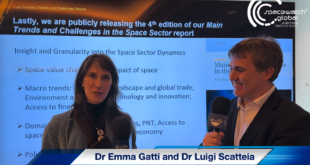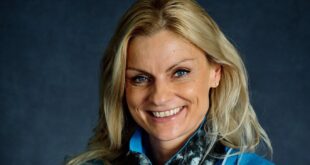By Yvette Gonzalez
In Portugal, the Institute of Systems and Computer Engineering, Technology and Science (INESC TEC) is seeking new ways to apply scientific action to support solutions both in space and on Earth.
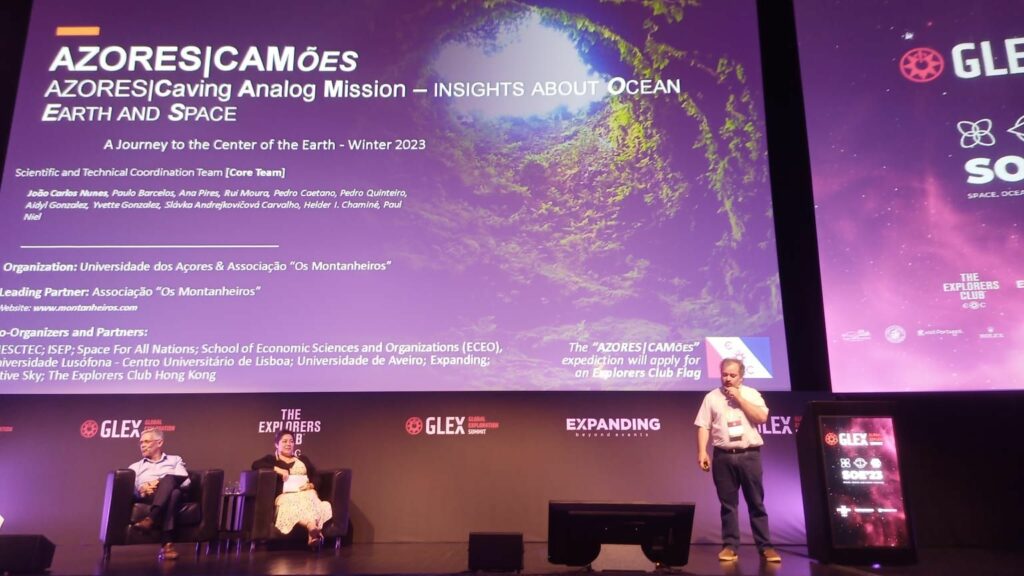
It is a fascinating moment in history to be alive. We are bearing witness to a rapid shift in the space industry marketplace, but also acutely cognizant of the climate crisis we are facing on this planet. In a time when the potential to participate as a relevant space stakeholder is expanding and opening up in unprecedented ways, there are critical collaborations grounding researchers, emerging leaders, academics, and strategic entities in the comprehensive realities of this new era. More importantly, they are seeking accessible solutions to combat these grand environmental challenges. In Portugal, the Institute of Systems and Computer Engineering, Technology, and Science (INESC TEC), a private nonprofit institution, is spearheading one such effort with a unique team of partners to demonstrate the valuable impact of collective and applied scientific action to support solutions both in space and on Earth.
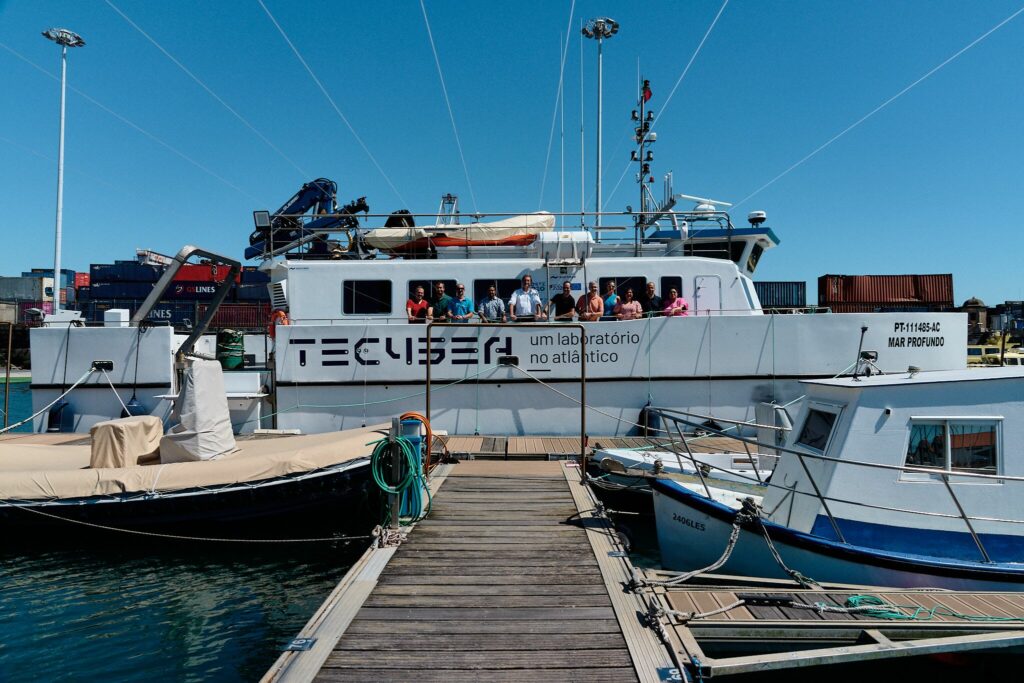
Building Space, Ocean, Earth Insights, and Community
Under the auspices of a memorandum of understanding, INESC TEC engaged the Superior Institute of Engineering of Porto (ISEP), the University of Porto Science Faculty, the Space For All Nations initiative, and the Portuguese Space Agency to cooperate on space-related outreach, education, and science activities towards the creation of a balanced community in space, science, technology, engineering, and mathematics.
In 2021, this international team set out to develop and implement research programs focused on geosciences, robotics, suborbital science, aeronomy, and engineering. Essentially leveraging the power of diverse sectors and perspectives to critically consider the sustainable use of space technology and applicable resilience strategies.
There are many examples of partnership projects that emerge in the industry, and to a large extent are successful for a short-lived amount of time or produce short-term deliverables, only to succumb to a temporary solution and fade out of operation. From the start, the challenge for this partnership was “How do five organizations with multiple nationalities and research agendas foster productive cooperation while maintaining integrity and credibility of their work?” As it turns out it is through a clear strategic vision, active communication, and building a research community with intention.
The more “real” the scenario, the better the results. The better the results, the more impact they have on real-world use.
The result has been increased student involvement across each country, the introduction of a new university technical curriculum in Portugal, increased access to international experts, co-publication of technical work, a growing database of knowledge, and the establishment of an annual technical summit to exchange findings and strategically plan efforts.
The partnerships that continue to form extend to the Lusophone groups from other Portuguese-speaking countries, such as Cape Verde, Mozambique, Angola, São Tomé and Prince, East Timor, or Brazil. This is proving that demand is high for community-driven solutions around shared and bold goals. A spectrum of experiences and skills are needed to analyze climate-induced issues, share collected data, dissect the problems being faced by all countries, ideate around actions to solve the problems, and share accountability for implementing and monitoring the impact of those actions. Building and leveraging a connected and equipped space, ocean, and Earth community is a promising path into our next human chapter.
Annual Working Summit
In 2022, INESC TEC hosted the first annual Space, Ocean, Earth Insights (SOE) summit in Porto, Portugal. With the combined support of the University of Texas at Austin Portugal Program, INESC TEC, and TEC4SEA, participating international experts and researchers came together to share their findings for the year and how they integrated into other peer projects (SOE 22 recordings are available here). The cross-fertilization of underwater exercises, robotics, and geology field campaign ideas inspired future collaboration for all partners and sparked new research projects. The ability for participants to gather and visit facilities such as the Porto-based TEC4SEA research vessel, a unique platform that supports research, development, and testing of underwater robotics and sensing technologies in the ocean environment, prompted ideas on new approaches such as human-in-the-loop underwater robotics interaction.
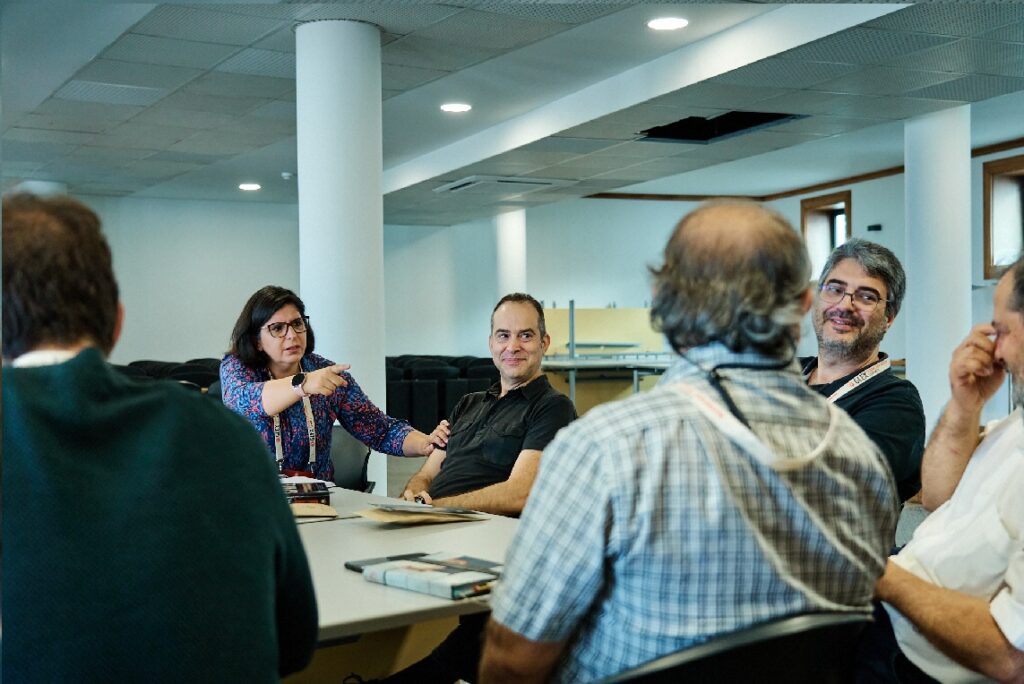
From June 12-16, 2023, the SOE was hosted at the Explorers Club Global Exploration (GLEX) summit in Agra, Terceira Island, Azores, Portugal. Bringing the SOE collaborators together with the prestigious explorers and scientists at GLEX offered an opportunity to cultivate new connections in scientific discovery. The stage was shared with planetary scientists, space industry experts, wildlife and ocean conservationists, environmental pioneers, an Iñupiaq fisher, speleologists, and anthropologists hailing from Peru, Brazil, Palestine, Nepal, Ecuador, Norway, Puerto Rico, and Portugal. (SOE 23 recordings will be available here). New partnerships were formed with the hope to combine resources in the future to amplify efforts, engage the public in programs, inform policies to protect and conserve the natural world, and forge paths to alleviate the adverse effects of the climate crisis..
Introducing a New Analog Test Bed
During the GLEX Summit in Angra do Heroísmo, Prof. João Carlos Nunes, Scientific Director of the Azores Institute of Technological Innovation as well as an Assistant Professor at the University of Azores, announced this team’s inaugural research analog, the Azores|CAMões Analog Research Mission, to take place in the Azores.
Conceived as a technical vision of Dr. Rui Moura, Professor of Geosciences at the University of Aveiro, this research analog mission is taking shape through an international team of experts and spearheaded by Dr. Ana Pires, Sea Georesources Researcher at the Centre for Robotics and Autonomous Systems at INESC TEC in Porto. Over the last three years, Dr. Moura and Dr. Pires have onboarded a powerful team of people passionate about protecting the oceans, taking action to conserve Earth, and understanding how space exploration can advance technologies for all three.
So, the key is finding reachable, safe, and quality locations that offer scientific value across a broad spectrum of technical areas.
The team will carry out this research analog at the Natal Cave site on Terceira Island. The Natal cave is a 696.6 m long, 12 m wide, and 7 m high lava tube, with several ramifications and a wide diversity of speleothems such as lava stalactites and stalagmites, flow marks, and levées. Making it an ideal and high-fidelity context for research. The location was selected based on interesting geology, accessibility, stability, and support from local organizations. These considerations ensure the team addresses lunar lava tube exploration challenges with respect for the local community and the environment.
To honor the community and location where this analog will be hosted, they have enlisted the Universidade dos Açores and the local association ‘Os Montanheiros’. This analog will serve to contribute valuable geology, life sciences, and space science education and outreach to academic institutions in Portugal, inviting educators and students to take part in activities surrounding the in-cave experience.
For many sectors, notably space, there is a growing use of unique or extreme environments and habitats that are built or used to test exploration on the lunar surface or Mars. The significance of analog studies using lava tubes on Earth informs the potential design of structures as potential habitats on other planetary bodies as well as offers solutions for a spectrum of industries such as geological, climate, medical, and biological. The space community has learned much over time from analogs such as the Biologic Analog Science Associated with Lava Terrains (BASALT), the San Francisco volcanic field in northern Arizona (used for Apollo and Artemis field training), or the European Space Agency’s Planetary ANalogue Geological and Astrobiological Exercise for Astronauts (Pangaea-X). Findings help advance technology development, understanding human behavior, testing geological tools, and a host of other exploration needs. The more “real” the scenario, the better the results. The better the results, the more impact they have on real-world use.
These austere environments can be hard to reach or demand a large investment to make them safe for human use and testing. So, the key is finding reachable, safe, and quality locations that offer scientific value across a broad spectrum of technical areas. Natal Cave in the Azores might be an option.
What Distinguishes this Analog Mission
There are scientific characteristics of Azorean lava tube systems that can contribute to analog studies and help plan and design lunar and Martian missions. Multi-disciplined researchers can gain valuable insights into the environmental, engineering, minerals, crew composition, and robotic challenges associated with lava tube and cave exploration. Azorean and Portugal-based scientists have studied these locations for decades, learning about the history of the formation and behavior of volcanic eruptions creating these islands. So why a space analog?
The goal of this first analog mission is really to prove the use of Azorean volcanic caves as a scientific and research space analog context for multisectoral and long-term investigations. The location itself must be valuable to future analog research where participants experience isolation, confinement, and overnight exposure to these unique elements while carrying out experiments.
In future lunar and Mars habitation, we will need safe and reliable shelter. A natural geologic formation such as lava tubes might offer protection from cosmic radiation, shield us from other elements, and provide housing for mid-to-long-term living on other planetary bodies. Lava tubes are a preliminary shelter option as we seek to understand what resources and materials we will have available to build structures safely above surfaces. Until then, the more we know about lava tubes and caves for living, the more prepared we are for longer stays on other planets. This first analog mission will include lidar and a scanline evaluation to assess the geotechnical stability of the cave. Measuring the rock mass quality in this underground structure can be analyzed and potentially used in the decision-making process for any engineering design project for similar contexts.
New partnerships were formed with the hope to combine resources in the future to amplify efforts, engage the public in programs, inform policies to protect and conserve the natural world,
In addition, the team will be using geophysics experiments similar to Apollo 14 and 16 Active Seismic Experiment (ASE) to map the cave beyond its current cartography. This will demonstrate how current technology can be used to map hard-to-reach portions of lava tubes or caves on the moon or Mars. This will support research to locate any potential resources trapped underground, a skill we will need on the Moon, Mars, and still here on Earth. Different robotics systems from INESC TEC will also be used to simulate approaches to investigating the surfaces of the moon and Mars.
Outcomes from these experiments can offer improved and environmentally respectful methods for safely and respectfully collecting geologic information without disturbing or infringing on the surface of a planetary body. Lessons we hope can also be applied on Earth.
Sharing Knowledge Through Education and Outreach
Results from this mission are not just for the team involved, but are intended to be shared and used widely for learning and inspiration. The CAMões team outreach will be accessible, specifically to underrepresented groups such as young girls and women as well as Lusophone groups.
Members of the CAMões team believe that lifting barriers to access is a path to equity and can increase opportunities for emerging generations. To that end, the Women In Tech© Portugal | Inner & Outer Space Initiative, Universidade Lusófona, Universidade de Aveiro, and Native Sky are critical partners that will lead bilingual, Portuguese and English, content creation that can be used for both school curricula and at-home activities. Webinars, virtual live sessions, in-person workshops, and science events on Terceira Island are being planned. And the team does not discount the power of social media, which will serve as a fundamental science communication platform. For a wider audience, team members will also create content in German, Spanish, and French, offering more educators, youth, and families across multiple countries a chance to engage, exchange, and learn.
Looking to the Future
The research team aims to implement this inaugural and historic mission in the winter of 2023.
“Our intent is to firmly establish the site for future missions”, Dr. Rui Moura said, “the hope is that these Azorean caves serve as a laboratory for discovery for people from all nations and backgrounds”.
The Azores|CAMões Analog Research Mission science and technology roadmap is being developed in collaboration with Azorean-based colleagues from the Association ‘Os Montanheiros’, Azores Institute of Technological Innovation, and the University of Azores who will facilitate the process. Having Paulo Barcelos and Prof. João Carlos Nunes as lead technical experts is critical to the success of this first mission.
The hope is that by 2025, this collective team can offer a unique and replicable framework for productive international research collaboration as well as a new, validated analog mission site. Repeatable and high-fidelity use of the Azorean cave systems will help increase the development of space exploration approaches and methods for how we steward our home planet.
More local and international partners, researchers, and sponsors will be announced in the coming months.

Yvette Gonzalez is a space industry strategist, humanitarian, and atmospheric/climate researcher. With over two decades of emergency experience rebuilding communities in active war, conflict, disasters, and epidemiological outbreaks, she now bridges space technologies to help solve Earth’s challenges. She consults with emerging space nations on space, science, and technology ecosystem roadmaps. Yvette is a co-founder of and conducts climate research with Native Sky, and is a Visiting Researcher with the University of Plymouth Oral Health Services and Clinical Epidemiology Research Group. She is a member of the Azores|CAMões Analog Research Mission team.


